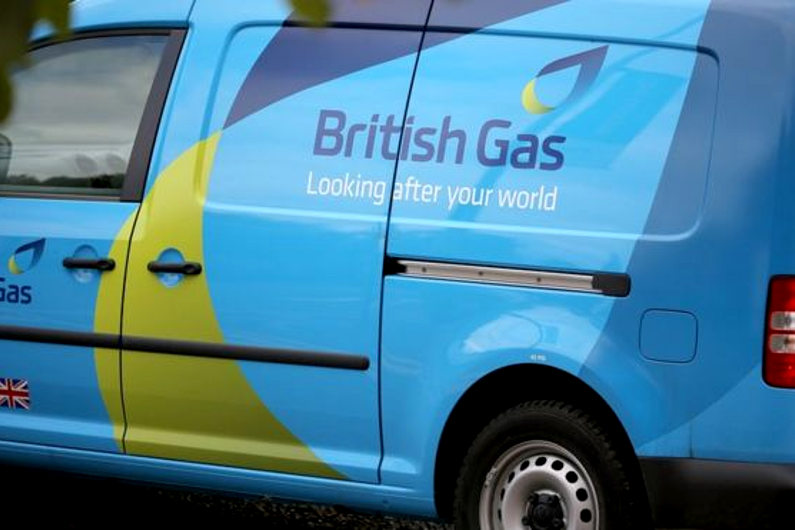In the automotive sector, it seems as if brands have a large budget to put to use when it comes to marketing. According to figures from Google’s Car Purchasing UK Report in April 2017, £115.9 million was invested in online display and direct mail by car dealers in the UK, in 2016 alone.

But how do other sectors fare when it comes to marketing? Automotive firm, Vindis, which offers premium VW services, explores marketing budgets and methods of multiple UK industries here…
Fashion industry
Online fashion sales hit £16.2 billion in 2017 — clearly, there’s a good reason to be in this sector! This figure is also expected to grow by a huge 79% by 2022, so where are fashion retailers investing their marketing budgets?

Brands which operate online — like Boohoo and ASOS —are driving the trend for over-the-internet shopping. In December 2017, ecommerce made up nearly a quarter of all purchases, according to the British Retail Consortium. ASOS experienced an 18% UK sales growth in the final four months of 2017, whilst Boohoo saw a 31% increase in sales throughout the same period.
But what are some of the biggest and most well-known British brands doing to capitalise on the online trend? Companies like Marks and Spencer, John Lewis and Next have put millions into online marketing to target the online shopper and drive digital conversions. John Lewis announced that 40% of its Christmas sales came from online shoppers, and whilst Next struggled to keep up with the sales growth of its competitors, it has announced it will invest £10 million into its online marketing and operations.
Buying what we need from home or during our lunchbreaks is the purchasing method-of-choice for many Brits in 2018. But what marketing tactics are proving particularly popular?
According to PMYB Influencer Marketing Agency, 59% of fashion marketers increased their budget for influencer marketing last year – an essential marketing tactic in the fashion industry. In fact, 75% of global fashion brands collaborate with social media influencers as part of their marketing strategy. More than 33% marketers think that influencer marketing is better than traditional processes — maybe because 22% of customers are said to be attained through influencer marketing!
Car industry
Although we tend to buy big purchases like cars and houses in person, car dealerships and others in the motoring industry must get digital-savvy now to survive. In Google’s Drive To Decide Report, in association with TNS, how today’s auto shopper is more tech-aware than before is discussed.

Reportedly, over 82% of the UK population aged 18 and over have access to the internet for personal reasons, while 85% use smartphones and 65% opt for a smartphone as their preferred device to access the internet.
Focusing on micro moments of influence — like online display ads — is key to bringing in those shoppers that start their motoring research over the internet. This method already occupies a significant proportion of car dealers’ marketing budgets. The before-mentioned Google report revealed that 90% of auto shoppers carry out research online, with 41% of those using a search engine. According to eMarketer, the automotive industry accounted for 11% of the total UK Digital Ad Spending Growth in 2017, placing the industry in second place behind the retail sector. The automotive industry is forecast to see a further 9.5% increase in ad spending in 2018.
But, with the forecourt being the main point of sale, is online marketing that important? Apparently so, as 41% of shoppers who research online find their smartphone research ‘very valuable’. 60% said they were influenced by what they saw in the media, of which 22% were influenced by marketing promotions — proving online investment is working in motoring.
However, mediums such as TV and radio are actually the most used forms of marketing in the motoring sector. Although, in the past past five years, it is digital that has made the biggest jump from fifth most popular method to third, seeing an increase of 10.6% in expenditure.
Utilities industry
Comparison websites are critical in the utilities sector. With comparison websites spending millions on TV marketing campaigns that are watched by the masses, it has become vital for many utility suppliers to be listed on comparison websites and offer a very competitive price, in order to stay in the game.

Compare the Market, Go Compare, MoneySupermarket and Confused.com are among the top 100 highest spending advertisers in the UK — but is this high expenditure in marketing the same for utility suppliers? Comparison sites can affect the rate of customer retention and acquisition in utilities. If you don’t beat your competitors, then what is to stop your existing and potential new customers choosing your competitors over you?
British Gas is an excellent example of how a utilities brand can make a success of customer retention, rather than acquisition. It recognises that this approach to marketing will be a slower process to yield measurable results, however, it believes that retention will lead to acquisition. The gas company hopes that by marketing a wider range of tailored products and services to their existing customers, it will be able to improve customer retention.
The utilities sector is also firmly in favour of going digital when it comes to marketing. Reportedly, 40% of all searches in Q3 2017 were carried out on mobile and another 45% of all ad impressions were via mobile too, according to Google’s Public Utilities Report in December 2017. Clearly, mobile is important — are all utilities firms investing in tailoring their marketing strategies to this device.
Healthcare industry
The healthcare sector is heavily monitored and restricted. So, how does it conduct marketing? Despite nearly 74% of all healthcare marketing emails remaining unopened, you’ll be surprised to learn that email marketing is essential for the healthcare industry’s marketing strategy.

Apparently, email is a major source of marketing and communication — around 2.5 million people use email as a primary source, and this number has risen recently. This means email marketing is targeting a large audience. For this reason, 62% of physicians and other healthcare providers prefer communication via email — and now that smartphone devices allow users to check their emails on their device, email marketing puts companies at the fingertips of their audience.
Of course, the healthcare sector is not restricted to email. Reportedly, one in 20 Google searches are for health-related content. This could be attributed to the fact that many people turn to a search engine for medical answer before calling the GP. Pew Research Center data shows 77% of all health enquiries begin at a search engine — and 72% of total internet users say they’ve looked online for health information within the past year. Furthermore, 52% of smartphone users have used their device to look up medical information.
But what about the influence of social media? Does that hold as much weight in this sector? While the healthcare industry is limited with regard to how it markets its services and products, that doesn’t mean social media should be neglected. In fact, an effective social media campaign could be a crucial investment for organisations, with 41% of people choosing a healthcare provider based on their social media reputation! And the reason? The success of social campaigns is usually attributed to the fact audiences can engage with the content on familiar platforms.
Is the investment worth it?
Certain industries appear to make a greater success — and have more reliance on — digital marketing than others. With a clear increase in online demand, both fashion and motoring are changing the purchasing process for everyone. So, you could risk being ‘out of the game’ before it has even begun if you neglect digital.
For the utilities sector, having a positive presence on comparison sites is crucial, although TV and digital appear to remain the main sales driving forces. Without the correct marketing, advertising or listing on comparison sites, you could fall behind. According to webstrategies.com, the average firm in 2018 is expected to allocate at least 41% of their marketing budget to online strategies — with this figure expected to grow to 45% by 2020. Social media advertising investments is expected to represent 25% of total online spending and search engine banner ads are also expected to rise significantly — all supposedly the result of more mobile and online usage.
Perhaps the investment is worth it when it comes to online marketing. If mobile and online usage continues to grow year on year at the rate it has done in the past few years, we forecast the investment to be essential.
Sources
https://pmyb.co.uk/global-fashion-company-influencer-marketing-budget/
https://www.prnewswire.com/news-releases/the-uk-clothing-market-2017-2022-300483862.html
http://uk.fashionnetwork.com/news/Online-is-key-focus-for-UK-fashion-retail-investment-in-2017,783787.html
http://www.mobyaffiliates.com/blog/retail-accounts-for-14-2-of-digital-advertising-spending-in-the-uk-in-2017/
https://www.webstrategiesinc.com/blog/how-much-budget-for-online-marketing-in-2014
https://www.kunocreative.com/blog/healthcare-email-marketing
http://www.evariant.com/blog/10-campaign-best-practices-for-healthcare-marketers
https://getreferralmd.com/2015/02/7-medical-marketing-and-dental-media-strategies-that-really-work/


